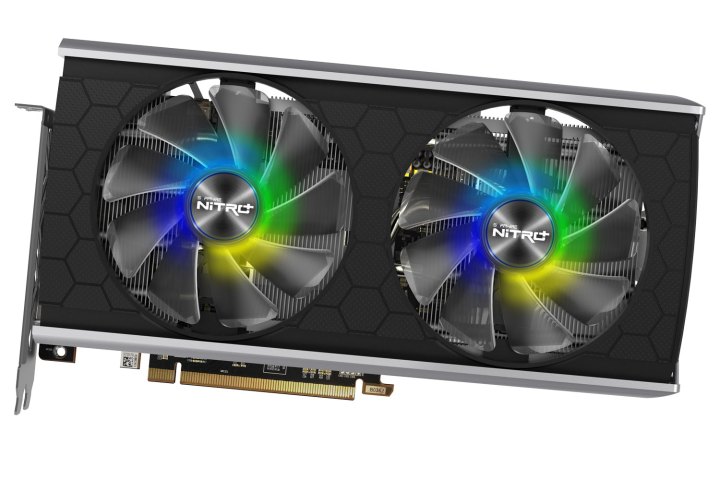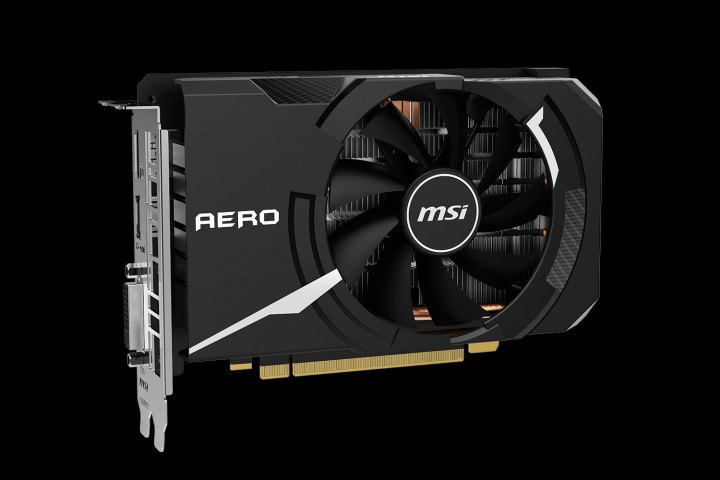The battle for a new generation of entry-level graphics cards is afoot. With AMD’s new RX 5500 XT hitting store shelves just before the holidays, Nvidia faces stiff competition. But how do the new cards measure up? We pitted the RX 5500 XT vs. 1650 Super vs. 1650, to find out which is the right GPU for you.
More interested in the best graphics cards for your money right now? These are the ones to pick.
Pricing and availability

The Nvidia GTX 1650 is the oldest of the cards in this comparison. It debuted in April 2019 with a base price of $149. At the end of 2019, its price tends to be a little higher thanks to overclocked versions and advanced cooling. It typically sells for around $160.
That puts it in close competition with the GTX 1650 Super, which launched on November 22 with a price tag of $159, though it typically sells for around $170 at the time of writing.
The AMD RX 5500 XT is the youngest card of the lot, hitting store shelves on December 12. Although its price varies depending on the version you buy, the recommended price from AMD is $169 for the 4GB version, and $199 for the 8GB version.
Performance
These cards might not be gaming powerhouses like the top-tier offerings from both AMD and Nvidia, but at 1080p, the 1650s and the 5500 XT are fantastic options for gaming at 60 FPS and above in almost any game. With prices so close, it should be no surprise then that the specifications are pretty tight too.
| AMD RX 5500 XT | Nvidia GTX 1650 Super | Nvidia GTX 1650 | |
| Graphics cores | 1,408 Stream processors | 1,280 CUDA cores | 896 CUDA cores |
| Base clock | N/A | 1,530MHz | 1,485MHz |
| Game clock | 1,717MHz | N/A | N/A |
| Boost clock | 1,845MHz | 1,725MHz | 1,665MHz |
| Memory | 4/8GB GDDR6 | 4GB GDDR6 | 4GB GDDR5 |
| Memory speed | 14Gbps | 12Gbps | 8Gbps |
| Memory bus | 128-bit | 128-bit | 128-bit |
| Bandwidth | 224GBps | 192GBps | 128 GBps |
| TDP | 130 watts | 100 watts | 75 watts |
Although specifications don’t tell the whole story, while we await the comprehensive third-party tests, they do give us a good idea about how these cards will perform against one another.
The cards from AMD and Nvidia work quite differently, so graphics core comparisons between manufacturers are apple to oranges. But as we saw in our GTX 1650 Super vs. GTX 1650 head to head, the leap in cores from the base model to the Super version, is significant. Clock speeds are less so, with only a mild jump in boost clock between the two GTX cards and a comparative “Game clock” (the clock speed that the GPU will typically run at) on the AMD card. The boost clock is much higher on the RX 5500 XT, but unless you’re using a card with significantly enhanced cooling, you won’t see those sort of clocks too often.
Note: Digital Trends confirmed with AMD that starting with the 5500XT, it will no longer publish “Base Clock” numbers, suggesting that the Game Clock was an accurate representation of everyday usage. The card will likely run slower if it gets too hot, but assuming stock cooling isn’t terrible, it may remain close to the game clock quite consistently.
One much greater difference between the red and green camps is in the memory configuration. The GTX 1650 sports GDDR5 memory running at 8Gbps, significantly slower than the GRRD6 found in the Super version. That gives the GTX 1650 Super far greater bandwidth, though the 5500 XT’s is greater still, thanks to its use of 14Gbps GDDR6. It also comes with the option of 8GB of memory, which isn’t strictly necessary in most games when running at 1080p, but for titles with ultra-HD textures that require additional buffering, 8GB can make a difference.
In terms of real-world performance, the GTX 1650 Super easily outperforms the standard GTX 1650. In TechSpot’s 17-game average test results, it had an average frame rate that was 37 percent higher than that of the standard 1650. Its one percent lows were close to 50 percent better, too, making for a smoother gaming experience.
The AMD RX 5500 XT, however, is faster still. AMD showed us some internal benchmark results early in December, with the 5500 XT 4GB managing a performance enhancement of between four and 30 percent over the GTX 1650 Super in titles like Battlfield V, The Division 2, and World War Z. The 8GB version pushed the envelope even further, managing to improve the capabilities of the already front-runner 5500 XT by a further 24 percent in some games.
The results from unbiased third parties mostly concurred with these results. Anandtech found that the 5500 XT 4GB and 8GB both handily beat the GTX 1650 Super in most games and benchmarks, although the performance difference between the two AMD cards is narrower than AMD claimed. That can be very dependent on the game, though.
Gamers Nexus reported similar results, though highlighted that overclocking the Nvidia and AMD cards can lead to the GTX 1650 Super just outpacing the 8GB 5500 XT. Overclock 3D highlighted how the 5500 XT 8GB could often close the gap with the GTX 1660 to a narrow margin, though did still fall behind the RX 590 in some cases, suggesting that while stocks last, the older Polaris card may still be worth buying.
Image sharpening and other features

A major development in graphics over the past couple of years has been in visual enhancement. Whether that’s in the form of hardware accelerated ray tracing with RTX GPUs, or image sharpening. The Nvidia GTX 1650 and 1650 Super do technically support ray tracing, though it’s not hardware accelerated and very few, if any games will be remotely playable at comfortable resolutions and frame rates. But they do support Nvidia’s own image sharpening feature, its NULL low-latency gaming technology, and select Reshade filters, for enhancing the look and feel of your games.
AMD’s RX 5500 XT has some intriguing technologies of its own, too. Alongside Radeon Image Sharpening, it also enjoys support for AMD’s new Boost feature, which can dynamically lower the resolution in games during moments of fast motion, improving performance and leading to more fluid gameplay without damaging the visual quality of the game (at least in theory). It also supports AMD’s anti-lag technology, for faster in-game inputs.
The 5500 XT offers more for less
With stiff competition from Nvidia’s GTX 16-series Super revisions, AMD needed to win big with its first non-5700 Navi graphics card and the 5500 XT delivered. With performance that outstrips the GTX 1650 Super in most games, a great selection of third-party options with enhanced cooling and higher clocks, and a comparative feature set, it’s simply the better all-round graphics card.
The GTX 1650 Super is a close second though, and it makes the GTX 1650 all but redundant. Until Nvidia lowers the price of that entry-level GPU, there is little point in buying it. If you’re going green, buy the Super version close to its base price. If you get too high, it starts to stray into GTX 1660 territory.
But if you’re buying the best for your money under $200, the RX 5500 XT is it. The 4GB is the better value for money, with only some games showing a noticeable advantage for the 8GB version. If your budget is $200 though, the RX 5500 XT 8GB will get you more performance in some cases and will provide better future proofing for modern games. It’s a great card for 1080p and 1440p gaming.





